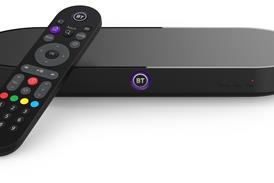What to expect at Mobile World Congress 2019

From foldable phones to live biohack chip implants and an exhibition and conference awash with 5G, we look at the likely trends and talking points at this year’s Mobile World Congress.
With global sales of smartphones stalling for the first time last year, manufacturers will be looking to restoke the market with innovations including foldable designs, multiple cameras and artificial intelligence at Mobile World Congress in Barcelona.
The 1.43 billion handset sales made globally in 2018 was 5% fewer than in 2017, according to Strategy Analytics. Market leader Samsung’s sales dropped 26 million to 291.3 million in 2018 and Apple’s 206.3 million units were also several million down on 2017. Meanwhile, Chinese brands Huawei and Xiaomi grew in size with Huawei predicted by Strategy Analytics to overtake Apple in phone sales by the end of this year. Huawei is sending its Chairman, Guo Ping, to talk up the company at MWC and talk down the threat certain governments claims it poses to national networks.
Handset innovation
After the smartphone and the tablet (and the phablet) comes a new gadget that can transition between a phone and a tablet which handset makers hope will become the next must-have accessory.
Samsung previewed a version of Galaxy last November sporting a 4.5-inch screen that opens up to a 7.3-inch screen. The display is built from a composite polymer technology called Infinity Flex that Samsung said is capable of being folded “hundreds of thousands of times” without breaking. Samsung could launch this at MWC or it could do so along with the latest ‘conventional’ Galaxy at its own event in the US just a few days before.
It’s already been beaten to the punch by Chinese maker Royole which launched the FlexPai last December. This transforms from a conventionally sized handset into a 7.8-inch tablet capable of withstanding 200,000 folds. That’s the equivalent of opening or closing the phone 548 times a day for a year or 274 times a day for two years, calculates CNET. Xaomi has also teased a foldable design and Huawei, LG and Motorola aren’t far behind.
Among the technical challenges facing origami phone designs: making it thin enough to…
Read the full article

Sign up to IBC365 for free
Sign up for FREE access to the latest industry trends, videos, thought leadership articles, executive interviews, behind the scenes exclusives and more!
Already have a login? SIGN IN

















